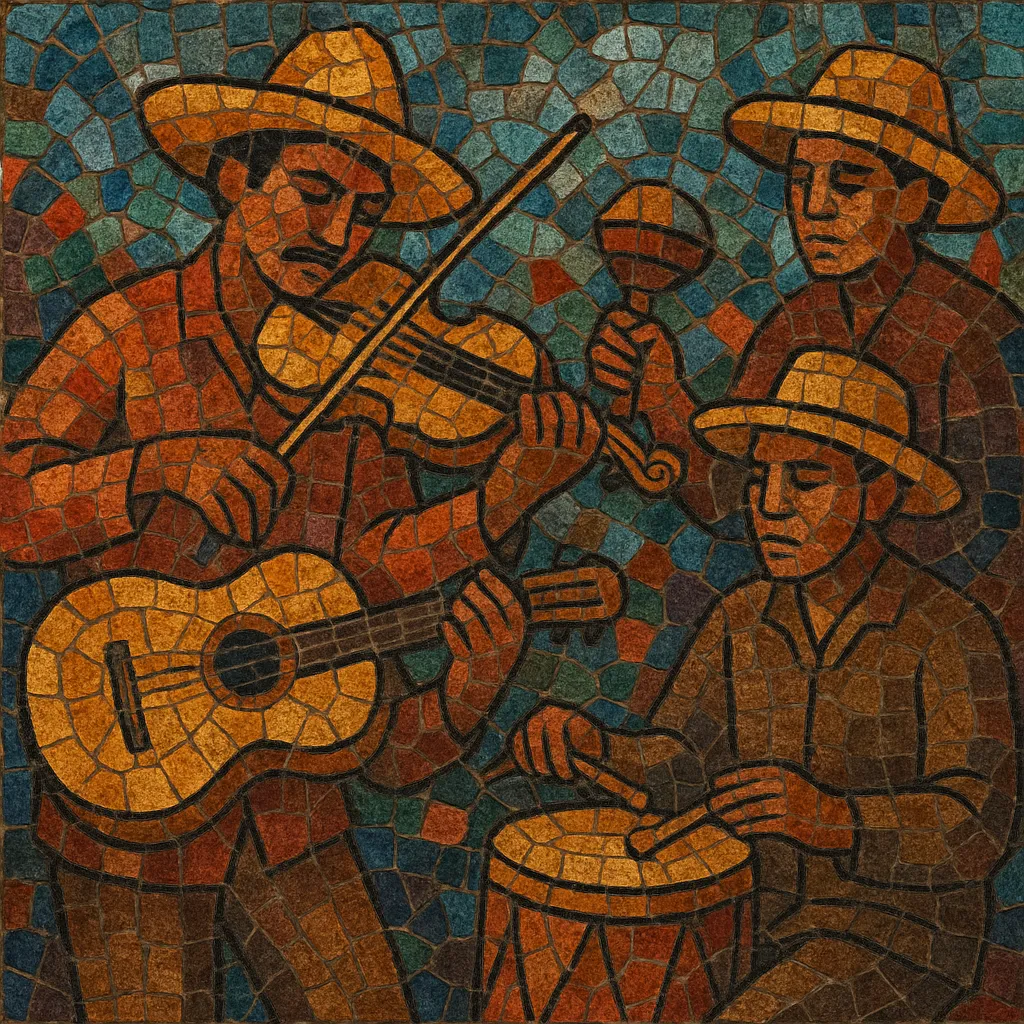Son calentano is a regional Mexican string-and-drum tradition from the Tierra Caliente region spanning northern Guerrero, southeastern Michoacán, and parts of the State of Mexico.
It is led by a highly ornamented solo violin accompanied by strummed guitars (notably guitarra de golpe/guitarra sexta) and a small double-headed drum called tamborita. The music alternates between lilting 6/8 and firm 3/4 (hemiola), propelling couple dances with lively zapateado footwork.
Repertoire centers on sones and gustos, alongside forms such as inditas, malagueñas, and valonas. Lyrics often use octosyllabic coplas with playful, amorous, or picaresque themes, punctuated by gritos and whistles. The style is virtuosic yet communal, designed equally for dancing, social festivities, and showcasing master fiddlers.
Son calentano crystallized during the 19th century as part of Mexico’s broader family of son traditions. In Tierra Caliente’s ranches and river towns, Spanish dance-song models (fandango, seguidilla, and waltz-time repertoires), Indigenous poetics, and Afro-Mexican rhythmic sensibilities converged. The small tamborita, local strumming patterns, and a florid violin voice set the regional sound apart from other sones.
By the early–mid 20th century, local “escuelas” (playing schools) around Tlapehuala, Arcelia, and Ciudad Altamirano refined the idiom. Fiddlers codified hallmark bowing, ornaments, and repertoire: sones for dancing and gustos for singing. Ensembles standardized around lead violin, one or two guitars (guitarra de golpe/guitarra sexta), and tamborita, sometimes adding a bass or a second violin.
From the 1960s onward, festivals, radio, and later academic/field recordings brought the style to national and international ears. Master violinists recorded emblematic versions of El gusto, El toro, and many local sones, inspiring younger musicians. Cultural initiatives in Guerrero and Michoacán—concerts, contests, and workshops—have helped sustain transmission into the 21st century.
Son calentano remains a living dance music at town fiestas and family gatherings, while also appearing on concert stages and in educational programs. Contemporary groups preserve traditional forms and tunings, yet some experiment with expanded ensembles and new lyrics, keeping the Tierra Caliente identity vibrant.


